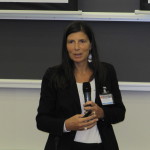The drawn wire is a very used product that characterizes our daily life. Its well-known applications concern electrical power cables, electronic instruments, wirings, traction and lifting cables, springs, screws, strings for musical instruments, wires to construct metal nets or shopping carts, fibres for reinforcing concrete and still several others. Distinguishing features of these components are the reliability of the used materials and their quality, therefore wire manufacturers and buyers share this main priority, since it is the challenge to win for maintaining or improving their market position. But what challenges are the companies operating in the sector called to accept? Essentially to shorten the Time To Market through a more attentive design and a faster and more performing production attained by using innovative technologies able to maintain a constant quality level and strict tolerances. Manufacturers aim at innovating plants and machines for the wire production by enhancing its performances, in order to permit the production of more complex geometries, of granting high flexibility (through a high number of mix changes and a reduction of the volumes of single batches) and quality. Concerning this, essential is the possibility of relying on plants characterized by a high automation degree. Today human labour is very expensive and it is more and more difficult to find skilled manpower, automation allows us to overcome this problem and to obtain processes that can be controlled by a pushbutton on a console. Machine tools are increasingly flexible and performing. They aim at optimizing energy efficiency and at reducing noise emissions and besides they are increasingly safe and ergonomic. The quality control must be severe and more and more integrated into the process. Solutions are available to control the productive process on line through sensors that enable the continuous control and it is possible to document the quality and the characteristics of each centimetre of wire. The data concerning the process control can be then used for improvement activities in real time. When the control system automatically detects anomalies or deviations, it warns operators who can intervene immediately, thus granting high quality standards of the product. Obviously, the correct management of these plants is fundamental and the involvement of operators for ordinary maintenance activities granting order and cleanliness (inspiring principles of the WCM theory) represents a necessary and winning factor. Finally we witness, in the ambit of production plants, more and more integrated solutions that complete the production and the on-line process control with product surface finishing activities to make the wire more and more performing. The challenges in the wire production ambit do not concern plants and machines only. An element of great interest regards in fact the innovation of materials. The market requires the use of a broader and broader range of materials, steel, aluminium, copper, gold, lead and platinum are used to produce wires and those materials must be characterized by high performances in terms of purity level, structural properties and standard behaviours. The new materials, in particular, are expected to provide higher performances coupled with relevant weight reductions, in order to obtain lighter materials able to reduce consumptions, emissions and to make their use more sustainable (especially in the automotive and transport sector in general).




